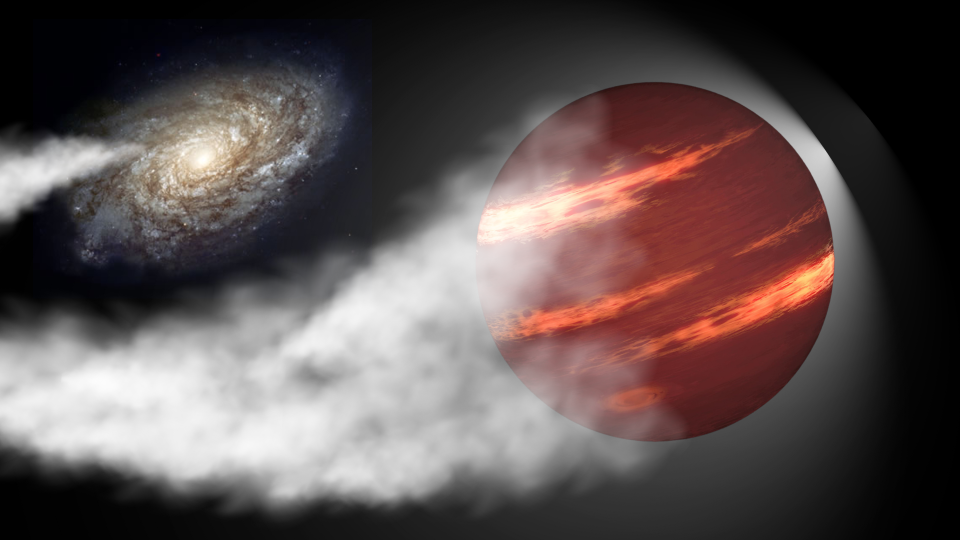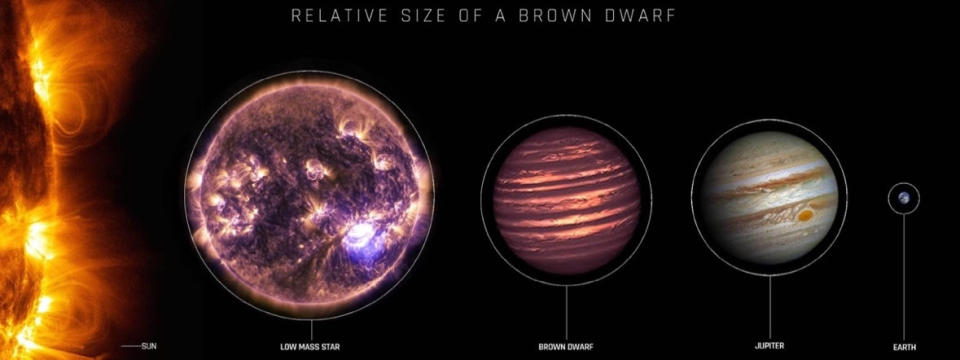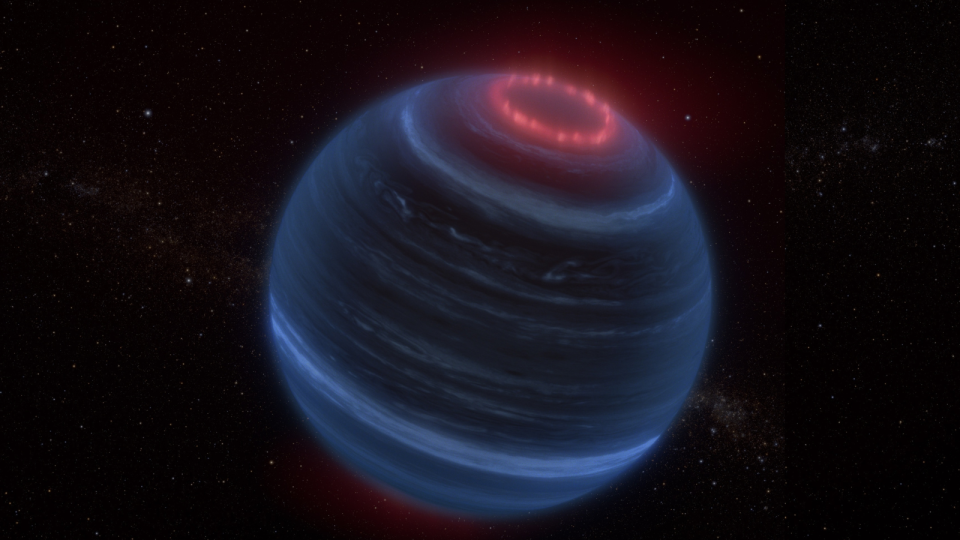When you buy through links in our articles, Future and its syndication partners may earn a commission.

A recently discovered anomalous stellar body may be a “failed star,” but in terms of speed, it’s certainly not a failure!
The potential brown dwarf is hurtling through our Milky Way galaxy at 1.2 million mph (1.9 million km/h). That’s about 1,500 times faster than the speed of sound! Luckily, this cosmic fugitive is headed toward the center of the Milky Way and not us. However, it’s moving so fast that it could eventually escape our galaxy entirely.
The incredible speed of this newly discovered celestial body, designated CWISE J1249+3621, is not the only fascinating thing about the object, which is currently located about 400 light-years away from Earth.
The mass of this celestial body is about 8% that of the Sun, or 80 times the mass of Jupiter. That puts it right on the borderline between a star and a fascinating group of objects called “brown dwarfs,” often (somewhat incorrectly) called “failed stars.”
CWISE J1249+3621 was originally discovered by citizen scientists working with the Backyard Worlds: Planet 9 project, using data from NASA’s Wide-field Infrared Survey Explorer (WISE) to detect faint, moving objects relatively close to the Sun.
Related: Hubble Space Telescope Discovers ‘Failed Stars’ Are Bad at Relationships, Too
After several citizen scientists spotted the object, a team of astronomers followed up with the Keck I telescope, one of two 10-meter twin telescopes on the dormant Maunakea volcano in Hawaii.
“We’ve discovered a very low-mass object, right on the boundary between a star and a brown dwarf, that has an extreme velocity and is moving so fast that it may no longer be bound to the Milky Way,” research team leader Adam Burgasser of the University of California San Diego told Space.com. “It joins a collection of ‘hypervelocity’ stars found in recent decades, most of which are thousands of light-years from the sun, while this source is ‘only’ 400 light-years away.”
Burgasser added that the team’s observations included an analysis of CWISE J1249+3621’s atmosphere, which indicated that the potential brown dwarf also has an unusual chemical composition. The team wanted to use the information they gathered about CWISE J1249+3621’s motion and composition to speculate about its possible origins.
“This discovery especially opens a new path to study brown dwarfs that are located in remote regions of the Milky Way, including the center, the halo, and the various globular clusters and satellites,” Burgasser said. “All of these systems are too far away to study brown dwarfs directly in detail, but if they are coming our way, it will be much easier!”
What is this villainous star running from?
Brown dwarfs form just like stars—from giant clouds of gas and dust, called molecular clouds, that develop extremely dense patches that collapse under the influence of their own gravity. Unlike a regular star like the Sun, however, brown dwarfs fail to gather enough material from the remnants of the cloud from which they formed to reach the mass necessary to generate the pressure and temperature in their cores that trigger the fusion of hydrogen into helium. This is the process that defines a “main sequence star.” Hence the nickname “failed star” that has been foisted on brown dwarfs.
Brown dwarfs range in mass from about four times that of Jupiter to about 80 times that of the gas giant. (For comparison, the sun is 1,000 times more massive than Jupiter.) The mass of CWISE J1249+3621 is exciting because it sits right on the hypothetical border between a star and a brown dwarf.
“The low mass is significant because it is by far the lowest mass, high velocity ‘star’ found to date. The original hypervelocity stars found about 20 years ago were massive O stars [around 50 times as massive as the sun] and B stars [up to 16 times as massive as the sun]a likely selection bias because these stars are rare and must be found at large distances,” Burgasser said. “Our discovery indicates that whatever process (or processes) are driving these stars away, they must be operating at both high and low masses.”


The UC San Diego researcher explained that the team is very excited to try to figure out what is sending this celestial body streaking through the Milky Way.
“The star could have been kicked out of the center of the Milky Way by our supermassive black hole, Sagittarius A*, a process often used to explain the origin of other hypervelocity stars,” Burgasser said. “The remarkable thing is that our star is moving toward the center, not away, but it may be on a return trip after having been ejected earlier.”
He added that it’s also possible that the brown dwarf is fleeing a “cosmic vampire.” The renegade stellar body could have been part of a binary system with a stellar corpse of a white dwarf ripping material off of it. This gruesome feeding would eventually cause the white dwarf to erupt in a cosmic explosion called a Type Ia supernova. This would destroy the white dwarf and provide the “kick” that would send this runaway racing through the Milky Way at incredible speeds.
“Another possibility is that the star was launched from a globular cluster by dynamical interactions with black holes at the center of the cluster; recent simulations show that this should happen multiple times over the age of the Milky Way,” Burgasser said. “Any of the above processes, given a fast enough kick, could have launched the star, or in the case of an ‘extragalactic’ star, the star could simply pass through.”
He added that the team can’t currently rule out that this potential brown dwarf is an interloper in our galaxy that comes from outside the Milky Way. But the fact that it’s passing through the plane of our Milky Way makes that less likely.
“The orbit is definitely the most surprising aspect of this object; it’s moving radially in and out of the center of the Milky Way and almost perfectly in the plane,” Burgasser said. “Most of the high-velocity stars we see are on much more chaotic or inclined orbits. I think this is a real clue to its true origin.”
Related: Brown Dwarfs: Coolest Stars or Hottest Planets?


Runaway brown dwarfs, if that is indeed CWISE J1249+3621, appear to be rare, but that may be due to their cool and dim nature, making them difficult to detect. This means that the population of runaway brown dwarfs could be much larger than current detection rates indicate.
“These types of stars are extraordinarily rare; only a few dozen have been found out of the billions of stars studied, and as mentioned, this is the first one with a low mass. And this object in particular is hard to see because it is a very cool and dim star, almost 10,000 times fainter than the Sun and emits most of its light at infrared wavelengths,” Burgasser said. “It’s hard to say how common these bodies are, with only one found so far, but because this one is so close, we speculate that there may be many more.”
“That speculation is partly based on the fact that most stars in the Milky Way have low masses, and that about one in five are brown dwarfs. These objects are the easiest to ‘move’ because they have so little mass.”
RELATED STORIES:
— James Webb Space Telescope discovers hint of mysterious aurora over ‘failed star’
— A Record-Breaking ‘Failed Star’ That Shouldn’t Exist (Video)
— Volunteers spot nearly 100 cold brown dwarfs near our sun
The team now plans to continue studying the atmosphere of CWISE J1249+3621 in more detail to see if its chemical abundances reveal anything about its origins. They will also attempt to discover more of these low-mass stellar runaways, a hunt in which citizen scientists will play an integral role.
“We definitely want to find more of these objects, and our citizen scientists have identified several more candidates at high speed for further investigation,” Burgasser concluded. “Citizen scientists were absolutely essential to this study! They were the ones who identified this source as an interesting target worth investigating. Without them, we would still have hundreds of thousands of faint little dots to sift through.”
The team’s research is discussed in a pre-peer-reviewed paper available on the repository site arXiv.